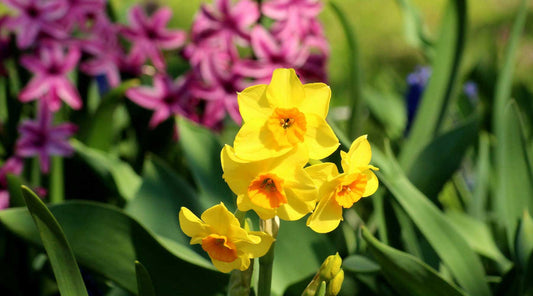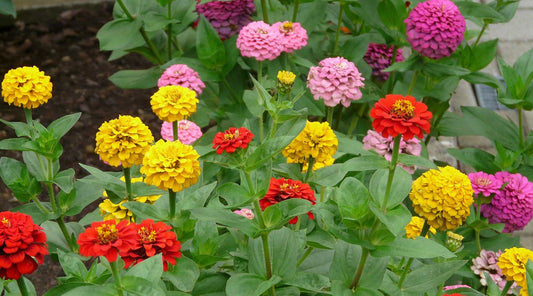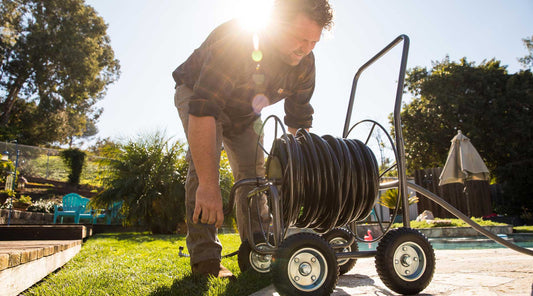What Flowers to Plant in March for a Stunning Spring and Summer
I still remember the first time my twins helped me plant flowers in our backyard. They were pretty young—barely old enough to tell a daisy from a dandelion—but the excitement in their eyes as they patted down the soil was something I’ll never forget. Now, they’re grown, but every spring, I still get that same feeling when I step outside, Terra Planter in hand, ready to bring new life to the garden. If you’re new to flower gardening, welcome! It’s one of the most rewarding hobbies you’ll ever pick up. And March? Well, that’s the perfect time to get started.
Welcome to Flower Gardening: A Beginner’s Delight
March is like a fresh page in a coloring book—it’s full of possibilities, and with a little effort, you’ll soon have a garden bursting with color. As the days get longer and the soil warms up, this is the time to plant flowers that will brighten your yard all spring and summer long. Whether you want a perennial garden that comes back year after year or a dazzling display of annuals, I’ve got you covered. Let’s dig in!
Perennials vs. Annuals: What’s Best for Your Garden?
Before we talk about what to plant, let’s cover the basics. You’ll hear a lot about perennials and annuals when planning your garden. Simply put:
- Perennials come back year after year, making them a great long-term investment. They take a little patience, but they reward you with lasting beauty.
- Annuals bloom for just one season but offer instant, eye-catching color. They’re perfect if you love changing things up every year.
I like to mix both in my garden. The perennials provide a reliable backbone, and the annuals let me get creative with different colors and patterns each season.
Best Perennials to Plant in March for Long-Lasting Beauty
If you’re looking for flowers that will return every year with minimal fuss, perennials are your best friend. Here are some top choices to plant in March:
1. Lavender: Fragrant and Low-Maintenance

Lavender isn’t just pretty—it’s practically a multi-purpose wonder. The scent alone makes it worth growing, and bees and butterflies love it too. Plant it in a sunny spot with well-draining soil, and you’ll have gorgeous purple blooms (and a natural stress reliever) year after year.
2. Coneflowers: Pollinator Favorites with Bold Color
Echinacea, or coneflowers, are hardy, drought-tolerant, and great for attracting butterflies and bees. They come in shades of pink, purple, and even orange, and they thrive in full sun. Bonus: they make excellent cut flowers for indoor arrangements!
3. Daylilies: Hardy, Vibrant, and Easy to Grow
If you want something practically foolproof, go for daylilies. These beauties come in an array of colors and require very little maintenance. Once they’re established, they bloom every year with minimal effort—perfect for a busy gardener!
4. Bleeding Heart: A Charming Early Bloomer
Bleeding Heart is one of my favorites for early spring color. Its delicate, heart-shaped pink flowers look like something out of a fairy tale. Plant it in a shady spot, and it’ll reward you with stunning blooms year after year.
Top Annual Flowers to Plant Now for a Burst of Color
Annuals are like the fireworks of the flower garden—short-lived but absolutely dazzling. Here are some of my favorites for early spring planting:
1. Pansies: Cool-Season Charmers

Pansies are one of the few flowers that thrive in cooler weather. Their cheerful, “smiling” faces come in nearly every color imaginable, and they’ll keep blooming until the summer heat sets in.
2. Snapdragons: Vibrant and Resilient
Snapdragons add vertical interest to your garden, and they come in a rainbow of colors. The best part? They can handle a light frost, so they’re perfect for early spring planting.
3. Sweet Alyssum: A Fragrant Ground Cover
If you love a garden that smells as good as it looks, plant sweet alyssum. It produces tiny, fragrant white or purple flowers and works beautifully as a border plant or in hanging baskets.
4. Petunias: Classic Blooms for Containers and Beds
Petunias are one of my go-to flowers for containers and garden beds. They bloom continuously and can withstand a bit of neglect—great for busy weekends!
Essential Tips for Successful March Flower Planting
Starting a flower garden isn’t just about picking the right plants—you also need to set them up for success. Here are a few must-do steps:
- Prepare the soil by loosening it and adding compost for nutrients.
- Choose the right spot—full sun for most flowers, but some, like bleeding hearts, prefer shade.
- Space them properly so they have room to grow.
- Water regularly, but don’t overdo it. Too much love (aka water) can cause root rot.
- Use a bulb planter or auger - Yard Butler's bulb planter digs a perfect hole for planting bulbs for the spring and the Roto Planter uses the power of your drill to make holes quickly and painlessly.
Fun & Creative Flower Bed Ideas for Beginners
If you’re new to gardening, don’t stress over perfection. Start small and have fun! Here are a few easy ideas:
- Cottage Garden Style: Mix perennials and annuals for a natural, overflowing look.
- Container Gardening: Great for small spaces and easy to move around.
- Color-Themed Beds: Pick a color scheme—pastels for a soft look, or bold reds and yellows for a lively vibe.
Nurturing Your Garden: What Comes Next?
Once your flowers are planted, keep them happy with a little TLC:
- Deadhead spent blooms to encourage new growth.
- Feed them with a balanced fertilizer every few weeks.
- Watch for pests—aphids and slugs love flowers as much as we do!
Final Thoughts: Growing More Than Just Flowers
Gardening is about so much more than flowers. It’s about moments—like watching a butterfly land on a coneflower or sipping coffee next to a bed of blooming lavender. It’s about slowing down, getting your hands in the dirt, and feeling connected to nature. It’s about the simple joy of watching something grow.
So if you’re just starting out, don’t worry about doing everything perfectly. Gardening is a journey, and every season brings something new to learn. Before you know it, you’ll be sharing plants and tips with neighbors, just like I do now. And who knows? Maybe someday, you’ll be teaching the next generation to dig, plant, and dream.
Now, grab those gardening gloves and get planting—your spring and summer are about to be a whole lot more colorful!







